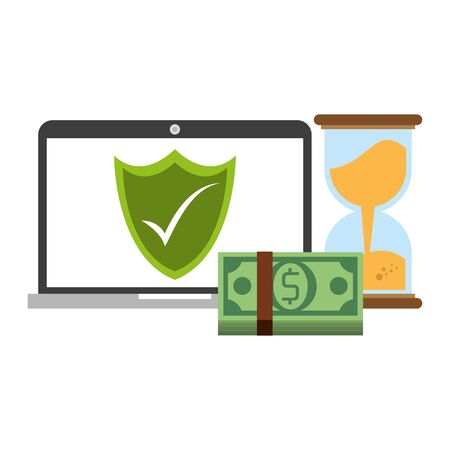What Is Phishing?
Phishing is a type of online scam where cybercriminals try to trick people into sharing sensitive information like passwords, credit card numbers, or Social Security numbers. These scams often come in the form of emails, text messages, or fake websites that look like they’re from a trusted company or government agency. The main goal is to steal your personal information or gain access to your accounts.
Common Tactics Used by Cybercriminals
Cybercriminals are always looking for new ways to fool people. Here are some of the most common phishing tactics you might encounter in the United States:
| Tactic | Description |
|---|---|
| Email Phishing | Attackers send fake emails that look legitimate, often using logos and language from real companies. |
| Spear Phishing | These are targeted attacks aimed at specific individuals or businesses, often using personal details to appear more convincing. |
| Smishing (SMS Phishing) | Scammers use text messages to try to get you to click on malicious links or give up personal info. |
| Vishing (Voice Phishing) | Fraudsters call pretending to be from banks or government agencies, asking for sensitive details over the phone. |
| Fake Websites | Cybercriminals create websites that look like real login pages to capture your username and password. |
Why Is Phishing Still a Big Threat in America?
Phishing remains a major problem for both individuals and businesses across the U.S. because scammers keep updating their methods and tools. They take advantage of busy lifestyles, trust in well-known brands, and even current events (like tax season or health emergencies) to make their messages seem urgent and real. With so much of our daily lives happening online—banking, shopping, social media—it’s easy for even careful people to get caught off guard.
Types of Phishing Scams
Phishing scams come in many different forms, targeting people in various ways. Understanding the main types can help you stay alert and protect yourself online. Below are some of the most common types of phishing attacks, along with real-life examples that are especially relevant to users in the United States.
Email Phishing
This is the classic form of phishing. Attackers send out mass emails pretending to be from trusted companies like banks, online stores, or even government agencies. These emails often urge you to click a link or download an attachment, which can steal your personal information or infect your device with malware.
Real-Life Example:
You get an email that looks like it’s from Bank of America, saying there’s been unusual activity on your account and you need to “verify” your information by clicking a link. The link takes you to a fake site designed to steal your login details.
Spear Phishing
Spear phishing is more targeted than regular email phishing. The scammer does research to personalize the message—maybe using your name, job title, or even referencing recent purchases—to make it look more convincing.
Real-Life Example:
An employee at a small business receives an email that appears to be from their boss, asking for sensitive payroll data. The attacker had checked LinkedIn to find out who works at the company and used this information to craft a believable request.
Smishing (SMS Phishing)
Smishing uses text messages instead of emails. Scammers will send texts claiming there’s a problem with your bank account or a delivery package, urging you to click a malicious link or reply with sensitive information.
Real-Life Example:
You receive a text message supposedly from USPS, saying your package can’t be delivered unless you confirm your address by clicking a link. The link actually leads to a fake website designed to collect your personal info.
Vishing (Voice Phishing)
Vishing involves phone calls from scammers pretending to be from legitimate organizations like your bank, the IRS, or even tech support. They try to trick you into sharing private information or sending money.
Real-Life Example:
You get a call from someone claiming to be from the Social Security Administration, warning that your Social Security number has been suspended due to suspicious activity. They ask for your full SSN and other personal details “to verify your identity.”
Summary Table: Common Types of Phishing Scams
| Type | Description | Example Target |
|---|---|---|
| Email Phishing | Mass emails appearing from trusted sources asking for personal info | Banks, online services (Amazon, PayPal), government agencies |
| Spear Phishing | Personalized emails targeting specific individuals using gathered data | Corporate employees, HR departments |
| Smishing | Phishing via SMS texts with urgent requests or fake links | Mobile phone users expecting deliveries or bank alerts |
| Vishing | Phone calls pretending to be official organizations seeking sensitive info | Elderly individuals, taxpayers, bank customers |
The more familiar you are with these scams, the easier it is to spot them before any damage is done. Stay cautious whenever someone asks for personal information—whether it’s by email, text, or phone call.

3. Recognizing the Red Flags
Phishing scams are getting smarter, but there are still some telltale signs you can watch out for to protect yourself. Knowing what to look for can help you spot a scam before you click or reply. Here are some of the most common red flags:
Suspicious Links
Phishing emails often include links that look real but actually lead to fake websites. These sites are designed to steal your personal information. Always hover over a link before clicking—if the web address looks strange, misspelled, or doesn’t match the supposed sender’s website, don’t click it.
Urgent or Threatening Messages
Scammers want you to act fast so you don’t have time to think. Be wary of emails or texts that claim your account will be locked, your payment failed, or you’re in trouble with the law unless you act immediately. Real companies rarely use threats or urgent deadlines in their communications.
Requests for Sensitive Information
Legitimate companies and banks will never ask for your password, Social Security number, or credit card details by email or text message. If someone is asking for this kind of info, it’s a big warning sign of a phishing attempt.
Common Warning Signs of Phishing Scams
| Red Flag | What It Looks Like |
|---|---|
| Suspicious Links | Misspelled URLs, unusual domain names, or links that don’t match the company’s official site |
| Urgency or Threats | “Act now!” “Your account will be suspended!” “Immediate action required!” |
| Requests for Sensitive Info | Email asks for passwords, Social Security numbers, or payment details |
| Poor Grammar & Spelling | Messages with lots of mistakes or awkward language |
| Unfamiliar Sender | Email comes from someone you don’t know or an address that looks odd |
| Unexpected Attachments | Files attached to messages from unknown sources—these can contain malware |
Quick Tips to Stay Safe:
- If something feels off, trust your gut and double-check with the company directly using contact info from their official website.
- Avoid clicking on links or downloading attachments from unknown senders.
- Look closely at sender addresses and the tone of the message—it could save you from falling for a scam.
By learning these red flags and staying alert, you’ll be much better prepared to spot phishing attempts and keep your information safe.
4. How to Protect Yourself and Your Organization
Use Strong Passwords
Creating strong passwords is your first line of defense against phishing scams. Avoid using easily guessed words like “password123” or your birthday. Instead, choose a mix of upper- and lower-case letters, numbers, and special characters. Here’s a quick reference for building strong passwords:
| Password Tip | Example |
|---|---|
| Mix uppercase and lowercase letters | PurpleMonkey42 |
| Add numbers and symbols | G0Bears!2024 |
| Avoid common words or patterns | Not: 123456, password, qwerty |
| Use at least 12 characters | S@feTravels2024! |
Enable Two-Factor Authentication (2FA)
Two-factor authentication adds an extra layer of security beyond just your password. Even if someone gets your password, they still need a second code—usually sent to your phone or generated by an app. Most American workplaces and online services offer 2FA options, so always turn this on where possible.
Popular 2FA Methods:
- Text message codes (SMS)
- Authentication apps (like Google Authenticator or Authy)
- Email verification codes
- Security keys (physical USB devices)
Stay Up-to-Date with Cybersecurity Best Practices
Cyber threats are always evolving, so it’s important to stay informed. Follow these best practices at work and at home:
- Keep software updated: Make sure your operating system, browsers, and antivirus programs are always up to date.
- Be wary of suspicious emails: Don’t click links or download attachments from unknown senders. If in doubt, verify with the sender directly.
- Attend regular cybersecurity training: Many American companies provide training sessions—don’t skip them!
- Report phishing attempts: If you spot a scam email at work, report it to your IT department right away.
- Use secure Wi-Fi networks: Avoid public Wi-Fi for sensitive activities like banking or accessing company data.
Create a Security-Minded Culture at Work
Your organization is only as safe as its least cautious team member. Encourage coworkers to talk openly about cyber risks and support each other in following security guidelines. Regular reminders and easy-to-understand tips can make everyone more vigilant against phishing scams.
5. What To Do If You Fall Victim
Immediate Steps to Take After a Phishing Attack
If you realize youve fallen for a phishing scam, dont panic. Acting quickly can help limit the damage. Here’s what you should do:
Step-by-Step Action Plan
| Step | What to Do | Why It Matters |
|---|---|---|
| 1 | Disconnect from the Internet if possible | This helps prevent more data from being sent out. |
| 2 | Change your passwords immediately, especially for compromised accounts and any other accounts using the same password. | This stops hackers from accessing your accounts further. |
| 3 | Enable two-factor authentication (2FA) on important accounts like email and banking. | Adds an extra layer of security to make it harder for scammers to get in. |
| 4 | Contact your bank or credit card company if financial information was shared. | They can monitor or freeze your accounts to prevent unauthorized transactions. |
| 5 | Scan your devices with trusted antivirus software. | Removes malware that may have been installed through phishing links or attachments. |
| 6 | Notify your employer if you used a work device or account. | Your IT department can help secure business systems and inform others if needed. |
| 7 | Report the phishing incident to relevant authorities (see below). | This helps protect others and may assist in recovering lost assets. |
Who to Report To and How
If Youre in the United States:
- The Federal Trade Commission (FTC): reportfraud.ftc.gov
- The Internet Crime Complaint Center (IC3): ic3.gov
- Your local police department: If you’ve lost money or sensitive information, file a report with local law enforcement.
- Your bank or credit union: If any financial data was compromised, let them know immediately so they can flag suspicious activity.
- Your company’s IT department: If it happened at work, tell your IT team right away so they can act fast.
How to Mitigate Harm and Protect Yourself Going Forward
- Monitor your accounts: Keep an eye on all financial and personal accounts for any signs of suspicious activity. Set up alerts where possible.
- Consider a credit freeze: If sensitive information was stolen, contact major credit bureaus (Equifax, Experian, TransUnion) to freeze your credit and prevent new accounts from being opened in your name.
- Email contacts: Alert friends, family, or colleagues if their information may have been exposed so they can be cautious about strange emails or requests coming from your account.
- Learns from the experience: Take time to understand how the scam worked so you can spot similar attempts in the future and help educate others around you.
Resources for Additional Help
- IdentityTheft.gov (FTC resource): For step-by-step recovery plans after identity theft.
- FTC Consumer Advice on Phishing Scams: Tips and guidance on staying safe online.
- Your state attorney general’s office: Many states have resources for reporting scams and getting help with fraud recovery.
Remember:
No one is immune to phishing attacks—what matters most is how quickly and effectively you respond. By taking these steps, you can reduce harm, recover faster, and build stronger defenses for next time.


